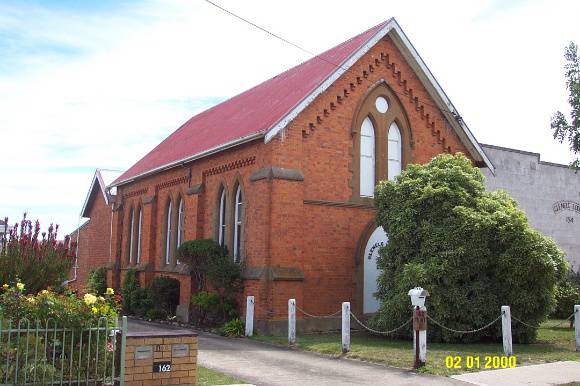| Back to search results » | Back to search page » |
|
GLENELG (MASONIC) LODGE
Other NameSCOTS PRESBYTERIAN CHURCH Location160 HENTY STREET, CASTERTON, GLENELG SHIRE LevelRecommended for Heritage Overlay |
|
Statement of Significance
What is Significant?
The Glenelg Masonic Lodge, 160 Henty Street, Casterton, was established before 1902 when the Lodge purchased the former Scots Presbyterian Church. The red brick Church was built in 1865 and had become too small for the congregation. No architect has been associated with its design and construction. It is most unusual for a Lodge to be located in a building in the Gothic style. The new entrance at the side of the Church, which now links the two main parts of the complex, is in a Classical style as is, in a much reduced way, the Modernist extension built on the north-east side after World War Two. The earlier part of the complex retains a high degree of integrity from the date of its conversion and the later part also retains a high degree of integrity. The condition of the complex is good.
How is it Significant?
The Glenelg Masonic Lodge is of historical, social and architectural significance to the Glenelg Shire.
Why is it Significant?
The Glenelg Masonic Lodge, as the first Scots Presbyterian Church, is of historical significance for representing the early influence and importance of the Presbyterian Church in Casterton and the district generally. It demonstrates the dedication of the local congregation and its clergymen to establishing and consolidating religious order in the far Western District of Victoria. It is of similar and continuing historical significance for representing the influence and importance of the Masonic movement in Casterton and the district generally. As the first Scots Presbyterian Church it is of social significance as the original focus for the Presbyterian congregation of Casterton for over thirty-five years. As the Glenelg Masonic Lodge it is of social significance as the continuing focus for the Masonic movement for over one hundred years. The complex is of architectural significance as a very rare example of a Masonic Lodge accommodated in a building in the Gothic style, later qualified by redecoration and extensions.
Group
Religion
Category
Meeting House




